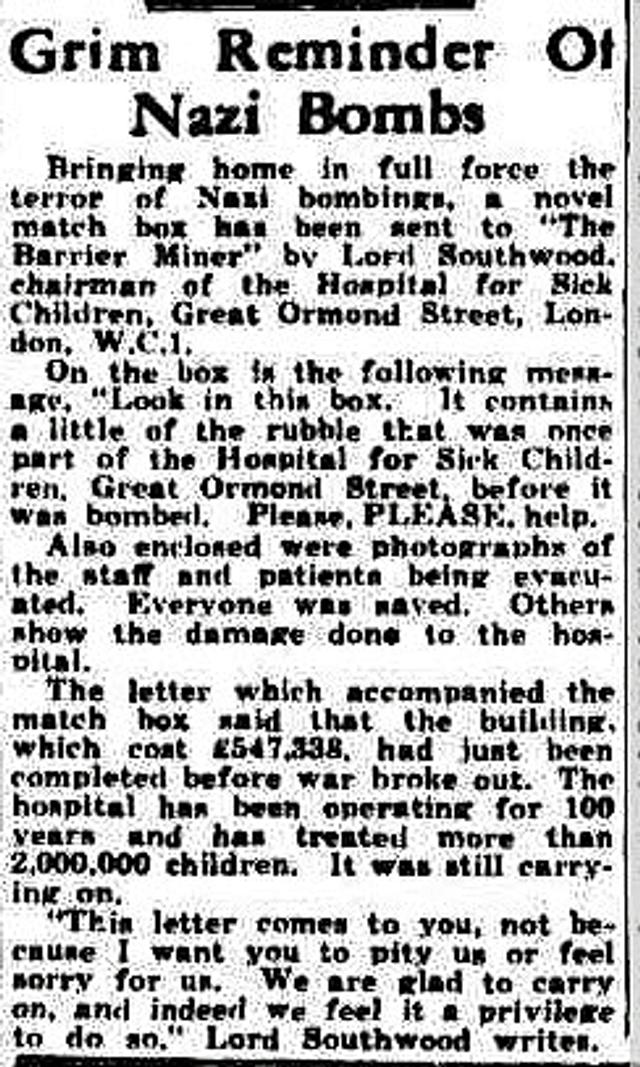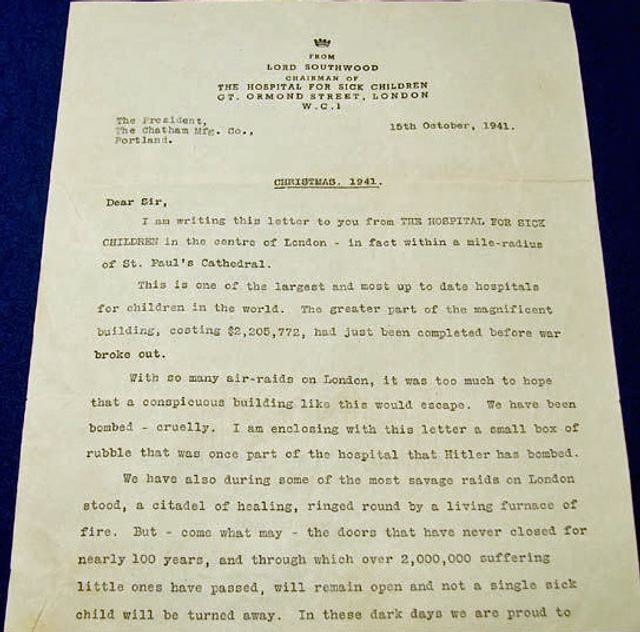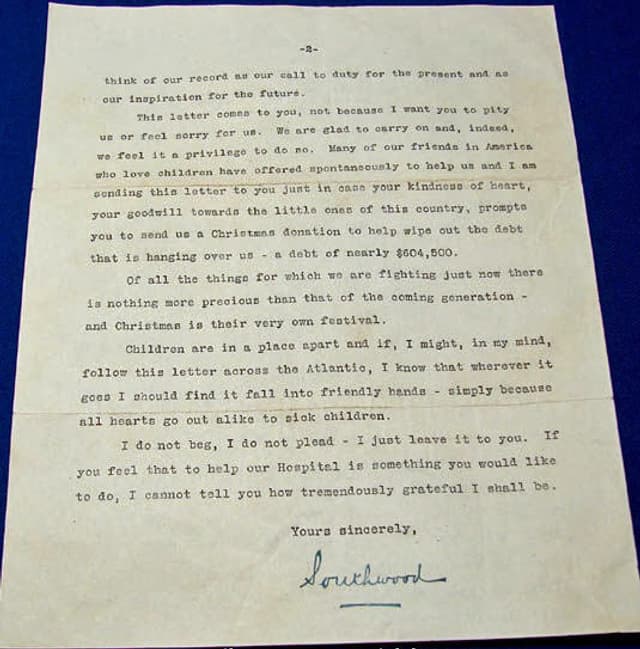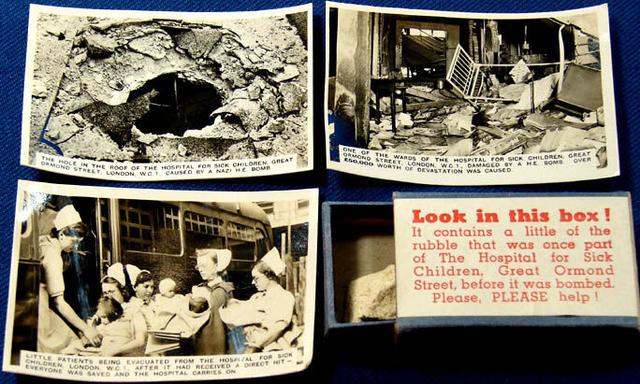Great Ormond Street Hospital: Christmas mailing from 1941
- Exhibited by
- Aline Reed
- Added
- June 04, 2012
- Medium of Communication
- Direct mail
- Target Audience
- Individuals
- Type of Charity
- Healthcare
- Country of Origin
- UK
- Date of first appearance
- December, 1941
SOFII’s view
It is no wonder Aline Reed chose this to present at SOFII’s first IWITOT (I Wish I’d Thought of That) event. It has everything. Charm, courage, dedication and, most of all, it is brilliantly innovative. How many mailings have been preserved for 70 years and then end up being sold?
Full marks must also go to Aline for her dogged research in finding out so much about the mailing and the challenges the fundraisers would have faced when trying to organise it, in the middle of a war.
Creator / originator
Unknown
Name of exhibitor
Aline Reed/Mark Phillips, Bluefrog
On the night of 4 September 1940, at the height of the London Blitz, the newly completed Southwood Building at Great Ormond Street Hospital (GOSH) was hit by a bomb. Thankfully, no one was hurt, but a recent addition to the hospital was reduced to rubble.
Despite the war, an appeal was launched straight away to rebuild the hospital. I found a reference to fundraisers selling boxes of rubble and circulating a bomb book of condolences, which supporters could sign. Then I tracked down an appeal pack which was, as far as I can tell, sent to high value prospects in the USA and Australia. Perhaps elsewhere?
Background
Who came up with this great fundraising idea? We may never know, but I like to think of a talented fundraiser all those years ago reaching down into the rubble and saying, ‘I tell you what – this would make a great mail pack’.
And indeed it is.
What could be more compelling than holding the rubble of the hospital in your hand? Add to that the brilliantly moving copy and you’ve got an excellent fundraising appeal.
Special characteristics
This amazing appeal doesn’t miss a fundraising trick – from the handwritten, stamped envelope asking the recipient to Please open carefully, to its intriguing contents. The little box of rubble is a brilliant enclosure, as are the instructions – Look in this box! A set of photos show the bombed hospital and is accompanied by a stirring letter, hand-signed by Lord Southwood, chairman of GOSH during the war.
Other points to note: rather than a donation form, there’s a slip that asks for money to be transferred directly into a bank account. This is a great way of getting the money quickly, but also highlights the difficulty of sending and receiving mail at this time.
I also found a newspaper clipping showing that this appeal generated newspaper coverage in Australia.
Influence / impact
It seems like an incredible feat simply to have launched an appeal like this, when circumstances must have made it very difficult to even send letters. Not only that but it’s a really fantastic example of how moving a direct mail appeal can be. A children’s hospital is destroyed, we put the rubble in your hand, you help rebuild it. Brilliant. Not even a world war will get in the way of that objective.
I’ve tried to piece together the story behind this appeal, but some gaps remain. If anyone knows more, please let us know. I don’t know how successful the appeal was or exactly how the recipients were chosen, but I do know that the building was rebuilt and reopened by 1945. I’m assuming some of the money came from this appeal.
Costs
Unknown, but I think there’s another interesting aspect to this particular piece. From 1939, paper was rationed in the UK. Newspapers, for example, reduced the number of their pages and authors had trouble getting books published, so even getting paper to send this mailing may have been a challenge.
Merits
This is more than an appeal – it’s a piece of history and the person who received it clearly valued it as such because she, I think it must have been a woman, kept it for over 70 years.
I first saw a reference to this appeal on the Great Ormond Street Hospital Charity website and I tracked down a picture of it early in 2012. At that time, it was… for sale. Or rather, it had recently been sold otherwise I’d have got hold of it myself. How many of us produce appeals that will be kept for 70 years and end up being sold as a piece of history? It certainly sets a precedent.
SOFII’s I Wish I’d Thought Of That 2012 – Aline Reed presents the Great Ormond Street Hospital 1941 mailing

 View original image
View original image
 View original image
View original image
 View original image
View original image
 View original image
View original image
















